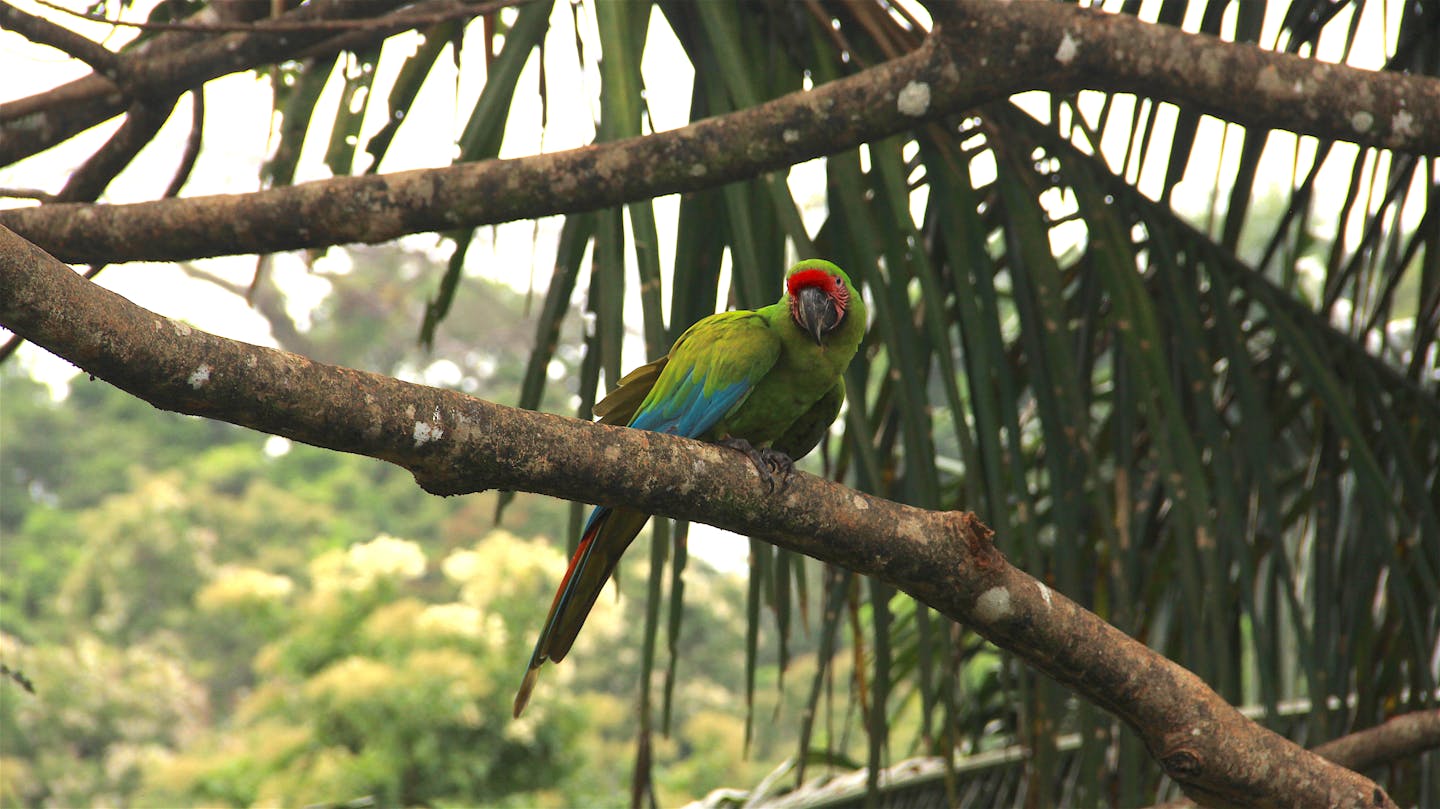Puerto Rican amazon: a colorful parrot vital to its ecosystem
Our “Species of the Week” series highlights the flagship species of each of the 844 unique ecoregions contained within Earth’s bioregions.
The rainforest of Puerto Rico is abundant with lush vegetation and diverse sounds. Perhaps the most brilliant display of green, however, is also the loudest. Cutting through the jungle’s melody is the screech of the Puerto Rican amazon. Known to the Indigenous Taíno people as iguaca, an onomatopoeic name that resembles the bird’s call, this parrot has a spectacular green plumage tipped with bright blue feathers that are only on full display in flight. Endemic to the archipelago, Puerto Rican amazons are imperative to the health of this forest ecosystem, but due to habitat loss, are also under constant threat.

The Puerto Rican amazon is the flagship species of the Puerto Rican Moist Forests ecoregion, located in the Caribbean Islands (NT26) bioregion.
A distinct red forehead and white circles around the eyes also make up the amazon’s vivid coloring. Measuring 28–30 cm (11.0–11.8 in) and weighing on average 275 g (9.7 oz), sexual dimorphism is not present in the species as both males and females are the same size and have radiant feathers. Coordinated dances filled with bows and fluttering of wings signal an interest in breeding, and once paired, Puerto Rican amazons will mate for life. After the female lays eggs, she will incubate them until hatching, and then both parents will take turns feeding and childrearing.
Reaching top speeds of 30 km/h (19 mph), amazons are relatively fast birds and can easily evade predators with their velocity and mid-flight acrobatics. They also use their loud calls to alert each other to these dangers and for food. Amazons forage together and their diet of flowers, fruit, nectar, leaves, and seeds is what makes them so important to the island. Known to consume more than 60 different plant species, they are essential seed dispersers as they fly long distances across the rainforest. Without these birds, the variety and rebirth of the jungle can quickly begin to subside as was seen in the 1970s.
Formerly thriving throughout the island, due to deforestation, hunting, and predation, only 13 wild Puerto Rican amazons were counted in 1975. A captive breeding program began as part of a long-term recovery strategy. Today, they are around 100 amazons in the wild and over 400 in captivity. Although still critically endangered, these birds are an example of how despite human activity being their biggest threat, it can also help them prevail. Conservation efforts continue throughout the region and with it, the vegetation and biodiversity continue to heal as well.



